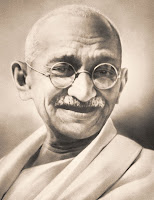 T
The origins of cricket are very vague, and many theories have been put forward suggesting its origins. Extensive studies and research have been conducted to trace its history and they have come out with different versions. However it is commonly accepted that the game originated from a very old leisure activity indulged by shepherds. The shepherds used crook and other farm equipments to hit a ball like deceive which used to be made up of wool or stone.
The first evidence of cricket being played was recorded in the year 1550, by the pupils of Royal Grammar School, Guildford. In the year 1611 it is reported that two young men from Sussex were punished for playing cricket instead of going to the church. The first match is recorded to have been played at Coxheath in Kent in the year 1646.
Ecricket used to thrive greatly as a gambling game. People used to place huge amounts of bets in matches and thus the game started to get recognition. Cricket was in fact a major gambling sport towards the end of the 17th century. It is recorded that in the year 1679, a 11-a-side match was played with stakes as high as 50 guineas per side.
Dhe 18th century cricket survived and thrived due to the huge amounts of money via monetary backing and gambling. The first instance of a match to be played between counties in England is recorded to be on 29th June in the year 1709. This match was played between Surrey and Kent at Dartford Brent.
The 18th century also witnessed the emergence of two types of cricket players. They were known as the retained player and the individual player. Generally the retained player was the servant of the lord and a cricketer as well. On the other hand the individual player was free to play anywhere with his skills. Basically it was something like the player could play anywhere with the amount of skill he possesses.
In the year 1787, the Marylebone Cricket Club also known MCC was created. The MCC has since then gone on to become one of the most prominent bodies in world cricket. Cricket in its initial days were restricted to the aristocratic class of England. Cricket gradually went on to become the national game of England.
The late 18th century was a very crucial phase for the development of the game, both within and outside Britain. The game was spread far and wide mainly due to England’s imperialism. Wherever they went, the game went with them and thus spread outside England. The first official match was held between Canada and United States was held in the year 1844.
In the present times, cricket has its own following of loyal fans. The International Cricket Council, better known as the ICC is the governing body in world cricket. The ICC was founded on the 15th of June in the year 1909. All laws relating to ODIs and Test Cricket are framed and implemented by the ICC.
DATES IN CRICKET HISTORY 1550
1550 (approx) Evidence of cricket being played in Guildford, Surrey.
1598 Cricket mentioned in Florio's Italian-English dictionary.
1610 Reference to "cricketing" between Weald and Upland near Chevening, Kent. 1611 Randle
Cotgrave's French-English dictionary translates the French word "crosse" as a cricket staff.
Two youths fined for playing cricket at Sidlesham, Sussex.
1676 First reference to cricket being played abroad, by British residents in Aleppo, Syria.
1694 Two shillings and sixpence paid for a "wagger" (wager) about a cricket match at Lewes.
1697 First reference to "a great match" with 11 players a side for fifty guineas, in Sussex.
1700 Cricket match announced on Clapham Common.
1709 First recorded inter-county match: Kent v Surrey.
1710 First reference to cricket at Cambridge University.
1727 Articles of Agreement written governing the conduct of matches between the teams of the Duke of Richmond and Mr Brodrick of Peperharow, Surrey.
1729 Date of earliest surviving bat, belonging to John Chitty, now in the pavilion at The Oval.
1767 (approx) Foundation of the Hambledon Club in Hampshire, the leading club in England for the next 30 years.
1769 First recorded century, by John Minshull for Duke of Dorset's XI v Wrotham.
1771 Width of bat limited to 4 1/4 inches, where it has remained ever since.
1776 Earliest known scorecards, at the Vine Club, Sevenoaks, Kent.
1780 The first six-seamed cricket ball, manufactured by Dukes of Penshurst, Kent.
1788 First revision of the Laws of Cricket by MCC.
1794 First recorded inter-schools match: Charterhouse v Westminster.
1795 First recorded case of a dismissal "leg before wicket".
1806 First Gentlemen v Players match at Lord's.
1807 First mention of "straight-armed" (i.e. round-arm) bowling: by John Willes of Kent.
1809 Thomas Lord's second ground opened at North Bank, St John's Wood.
1811 First recorded women's county match: Surrey v Hampshire at Ball's Pond, London.
1814 Lord's third ground opened on its present site, also in St John's Wood.
1827 First Oxford v Cambridge match, at Lord's. A draw.
1828 MCC authorise the bowler to raise his hand level with the elbow.
1833 John Nyren publishes his classic Young Cricketer's Tutor and The Cricketers of My Time.
1836 First North v South match, for many years regarded as the principal fixture of the season.
1836 (approx) Batting pads invented.
1844 First official international match: Canada v United States.
1845 First match played at The Oval.
1849 First Yorkshire v Lancashire match.
1850 Wicket-keeping gloves first used.
1850 John Wisden bowls all ten batsmen in an innings for North v South.
1853 First mention of a champion county: Nottinghamshire.
1858 First recorded instance of a hat being awarded to a bowler taking three wickets with consecutive balls.
1864 Overhand bowling authorised by MCC.
1868 Team of Australian aborigines tour England.
1873 WG Grace becomes the first player to record 1,000 runs and 100 wickets in a season.
First regulations restricting county qualifications, often regarded as the official start of the County Championship.
1877 First Test match: Australia beat England by 45 runs in Melbourne.
1880 First Test in England: a five-wicket win against Australia at The Oval.
1882 Following England's first defeat by Australia in England, an "obituary notice" to English cricket in the Sporting Times leads to the tradition of The Ashes.
1889 South Africa's first Test match.
Declarations first authorised, but only on the third day, or in a one-day match.
1895 WG Grace scores 1,000 runs in May, and reaches his 100th hundred.
1899 AEJ Collins scores 628 not out in a junior house match at Clifton College, the highest individual score in any match.
1900 Six-ball over becomes the norm, instead of five.
1909 Imperial Cricket Conference (ICC - now the International Cricket Council) set up, with England, Australia and South Africa the original members.
1910 Six runs given for any hit over the boundary, instead of only for a hit out of the ground.
1912 First and only triangular Test series played in England, involving England, Australia and South Africa.
1926 Victoria score 1,107 v New South Wales at Melbourne, the record total for a first-class innings.
1928 West Indies' first Test match.
AP "Tich" Freeman of Kent and England becomes the only player to take more than 300 first-class wickets in a season: 304.
1930 New Zealand's first Test match.
Donald Bradman's first tour of England: he scores 974 runs in the five Ashes Tests, still a record for any Test series.
1931 Stumps made higher (28 inches not 27) and wider (nine inches not eight - this was optional until 1947).
1932 India's first Test match.
Hedley Verity of Yorkshire takes ten wickets for ten runs v Nottinghamshire, the best innings analysis in first-class cricket.
1932-33 The Bodyline tour of Australia in which England bowl at batsmen's bodies with a packed leg-side field to neutralise Bradman's scoring.
1934 Jack Hobbs retires, with 197 centuries and 61,237 runs, both records. First women's Test: Australia v England at Brisbane.
1935 MCC condemn and outlaw Bodyline.
1947 Denis Compton of Middlesex and England scores a record 3,816 runs in an English season.
1948 First five-day Tests in England.
1952 Pakistan's first Test match.
1953 England regain the Ashes after a 19-year gap, the longest ever.
1956 Jim Laker of England takes 19 wickets for 90 v Australia at Manchester, the best match analysis in first-class cricket.
1957 Declarations authorised at any time.
1960 First tied Test, Australia v West Indies at Brisbane.
1963 Distinction between amateur and professional cricketers abolished in English cricket.
1969 Limited-over Sunday league inaugurated for first-class counties.
1971 First one-day international: Australia v England at Melbourne.
1975 First World Cup: West Indies beat Australia in final at Lord's.
1976 First women's match at Lord's, England v Australia.
1978 Graham Yallop of Australia wears a protective helmet to bat in a Test match, the first player to do so.
1979 Packer and official cricket agree peace deal.
1980 Eight-ball over abolished in Australia, making the six-ball over universal.
1981 England beat Australia in Leeds Test, after following on with bookmakers offering odds of 500 to 1 against them winning.
1982 Sri Lanka's first Test match.
1991 South Africa return, with a one-day international in India.
1992 Zimbabwe's first Test match.
1993 The ICC ceases to be administered by MCC, becoming an independent organisation with its own chief executive.
1994 Brian Lara of Warwickshire becomes the only player to pass 500 in a firstclass innings: 501 not out v Durham.
2003 Twenty20 Cup, a 20-over-per-side evening tournament, inaugurated in England.
2004 Lara becomes the first man to score 400 in a Test innings, against England.
2005 The ICC introduces Powerplays and Supersubs in ODIs, and hosts the inaugural Superseries.
2006 Pakistan forfeit a Test at The Oval after being accused of ball tampering

Proud to be an INDIAN





















